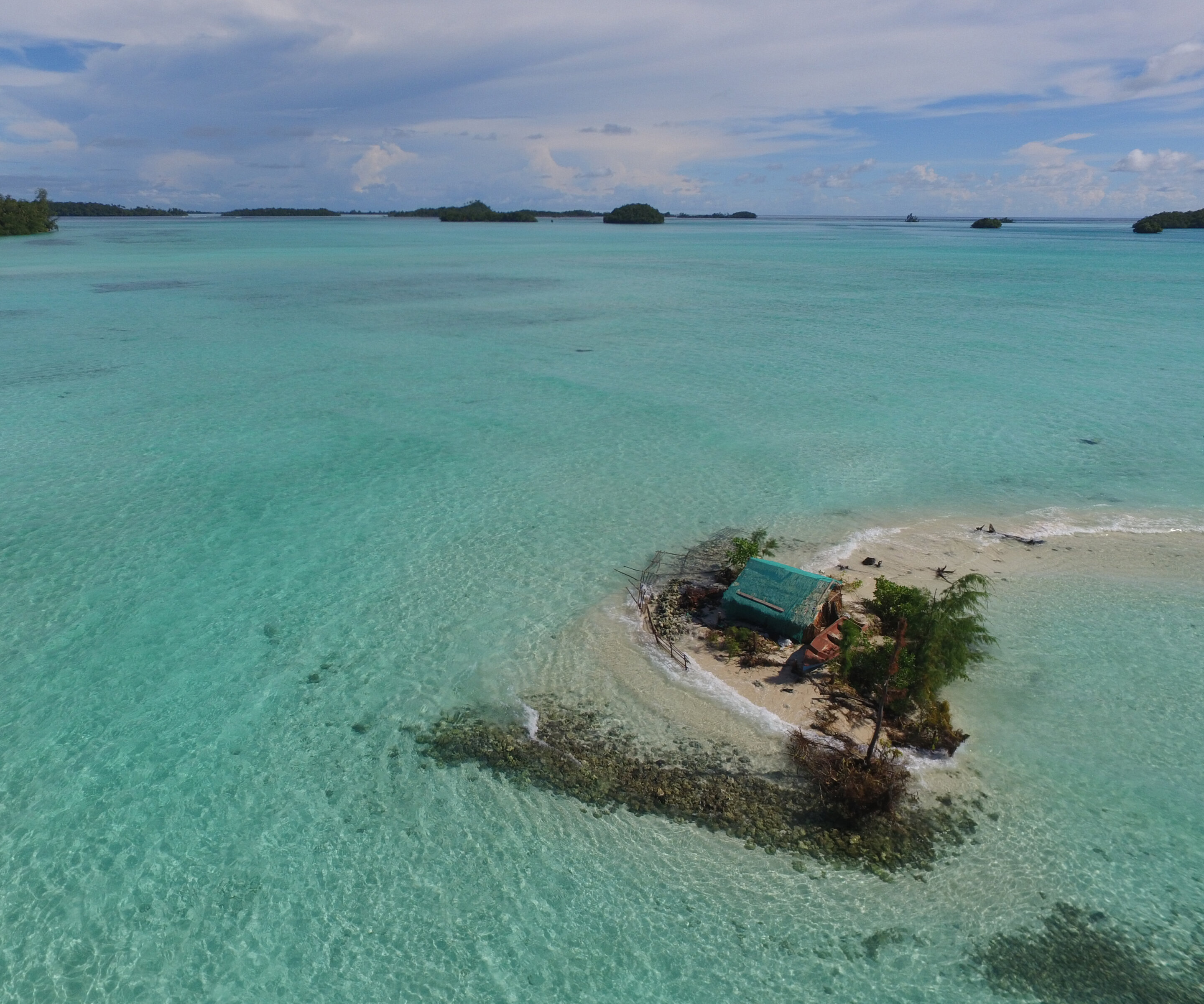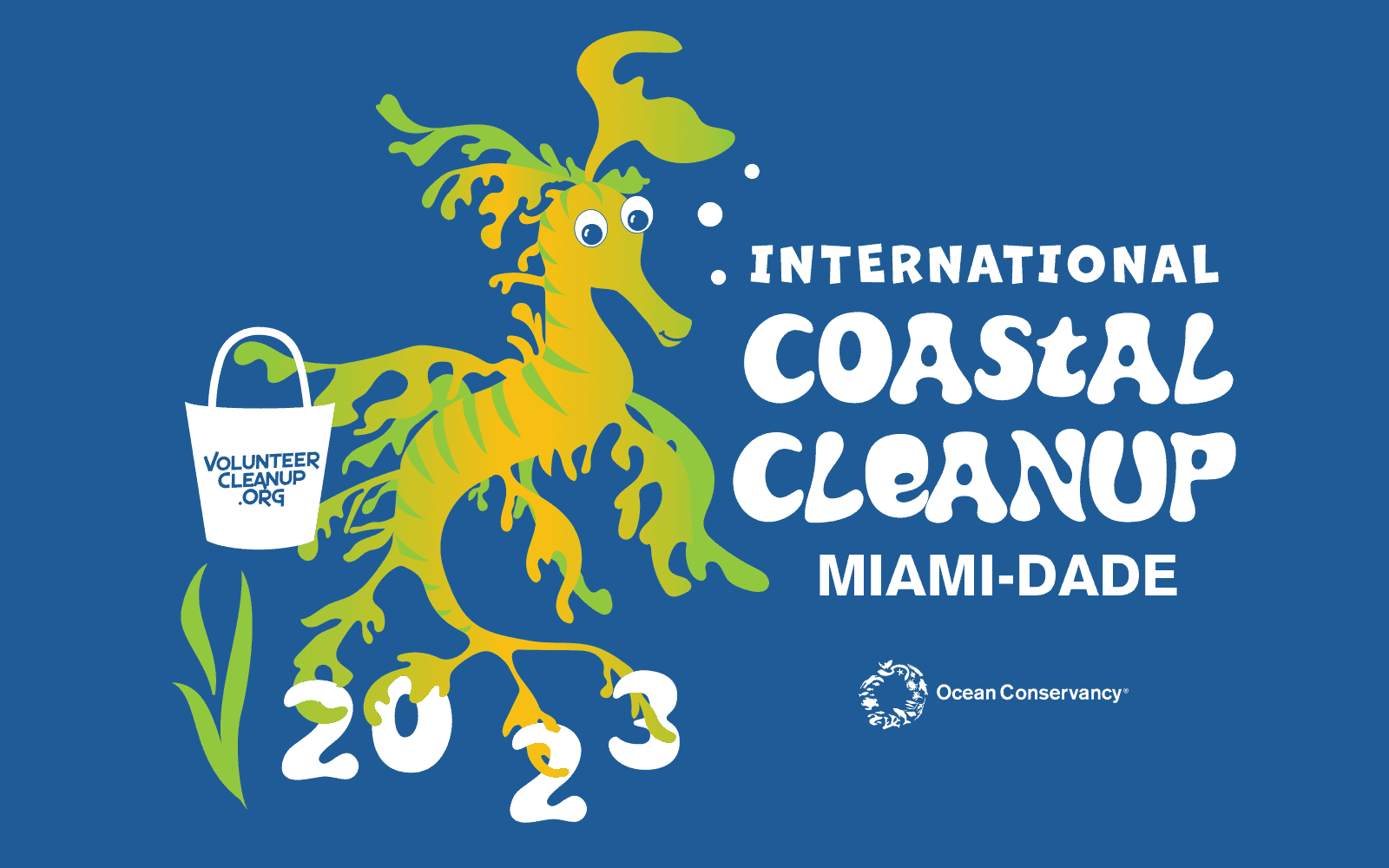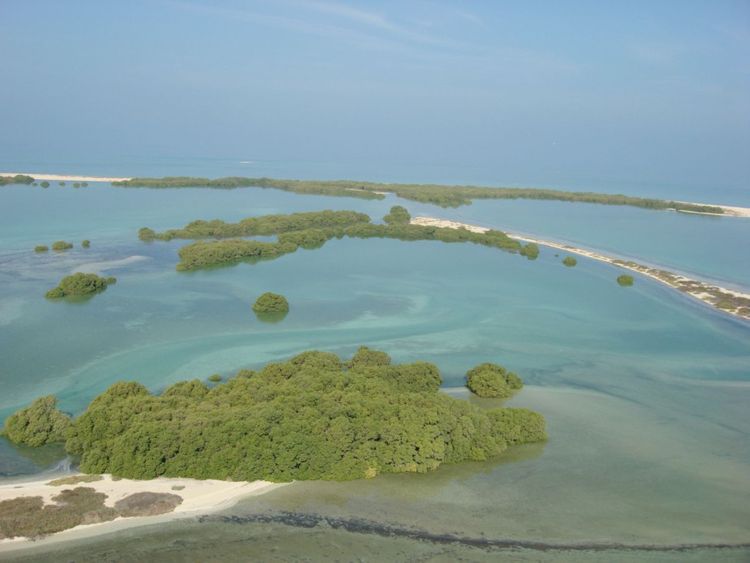MAP News Issue #580 – Sept. 09, 2023
PREVIEW VERSION
The MAP News | |
Bees helping replenish the mangrove population in Tampa Bay  USA – Josh Harris is a commercial fisherman with a deep love for Tampa Bay. “From the time I was two years old is my earliest memories of fishing off my grandfather’s dock,” he recalled. But it’s his other business venture that has this conservationist buzzing with excitement. Harris owns Queen and Colony Bee Company and manages 200 colonies around Tampa Bay. Harris has noticed something special at his hives close to the water. His bees are producing mangrove honey. “It’s a rare honey in Florida because we don’t have the concentration of mangroves we used to,” he explained. Since the 1900s, Tampa Bay has lost about half of its mangrove trees due to development, climate change, and water pollution. And that’s not good for the health of the bay. “They are along the coastline; they stabilize the shoreline. They prevent erosion, and they also filter nutrients and pollutants from the water. So, they clean the water,” shared Harris. Harris said the hard work of his bees is directly helping the mangrove population around Tampa Bay. “As the bees go around and pollinate the flowers, they allow those trees to go to seed. The seeds will fall into the bay and get spread around by the tides and the wind and have the opportunity to produce new mangrove trees that will continue that process of cleaning the water,” explained Harris. As he sees new mangrove growth around his hives, it gives him hope for the future of Tampa Bay. “As a commercial fisherman, I rely on the fish in Tampa Bay and the crabs to provide for my family. We want to see our livelihood continue. We want to see our children have the opportunity to continue the tradition,” shared Harris. USA – Josh Harris is a commercial fisherman with a deep love for Tampa Bay. “From the time I was two years old is my earliest memories of fishing off my grandfather’s dock,” he recalled. But it’s his other business venture that has this conservationist buzzing with excitement. Harris owns Queen and Colony Bee Company and manages 200 colonies around Tampa Bay. Harris has noticed something special at his hives close to the water. His bees are producing mangrove honey. “It’s a rare honey in Florida because we don’t have the concentration of mangroves we used to,” he explained. Since the 1900s, Tampa Bay has lost about half of its mangrove trees due to development, climate change, and water pollution. And that’s not good for the health of the bay. “They are along the coastline; they stabilize the shoreline. They prevent erosion, and they also filter nutrients and pollutants from the water. So, they clean the water,” shared Harris. Harris said the hard work of his bees is directly helping the mangrove population around Tampa Bay. “As the bees go around and pollinate the flowers, they allow those trees to go to seed. The seeds will fall into the bay and get spread around by the tides and the wind and have the opportunity to produce new mangrove trees that will continue that process of cleaning the water,” explained Harris. As he sees new mangrove growth around his hives, it gives him hope for the future of Tampa Bay. “As a commercial fisherman, I rely on the fish in Tampa Bay and the crabs to provide for my family. We want to see our livelihood continue. We want to see our children have the opportunity to continue the tradition,” shared Harris.
GLOBAL Will the world’s mangroves, marshes and coral survive warm, rising seas?  AUSTRALIA – Research published in Nature warns that rising seas will devastate coastal habitats, using evidence from the last Ice Age. 17,000 years ago you could walk from Germany to England, from Russia to America, from mainland Australia to Tasmania. Sea levels were about 120 meters lower than today. But, as the last Ice Age ended, the oceans rose quickly by one meter a century on average. Vast swathes of coastal habitat were wiped out. Recovery took thousands of years. Rapid sea level rise and coastal habitat retreat will happen again if warming levels rise above Paris Agreement targets, warns a global research team led by Macquarie University. They say that these mangroves, marshes, coral reefs and coral islands are essential to protect coastlines, trap carbon, nurture juvenile fish and help sustain millions of coastal residents. In the paper the authors, from 17 institutions in Australia, Singapore, Germany, U.S., Hong Kong and the UK, report on how these coastal habitats retreated and adapted as the last Ice Age ended and how they are likely to cope with this century’s predicted sea level rises. “Coastal ecosystems exist where our oceans meet the land, including mangroves, coastal marshes and the fringes of sandy coral islands—the low-lying areas flooded and drained by tidal salt water,” said lead author, coastal wetlands specialist Professor Neil Saintilan from Sydney’s Macquarie University. Sea-level rise impacts, Solomon Islands. Credit: Simon Albert, University of Queensland “Our research shows these coastal habitats can likely adapt to some degree of rising sea levels but will reach a tipping point beyond sea-level rises triggered by more than 1.5 to 2°C of global warming. AUSTRALIA – Research published in Nature warns that rising seas will devastate coastal habitats, using evidence from the last Ice Age. 17,000 years ago you could walk from Germany to England, from Russia to America, from mainland Australia to Tasmania. Sea levels were about 120 meters lower than today. But, as the last Ice Age ended, the oceans rose quickly by one meter a century on average. Vast swathes of coastal habitat were wiped out. Recovery took thousands of years. Rapid sea level rise and coastal habitat retreat will happen again if warming levels rise above Paris Agreement targets, warns a global research team led by Macquarie University. They say that these mangroves, marshes, coral reefs and coral islands are essential to protect coastlines, trap carbon, nurture juvenile fish and help sustain millions of coastal residents. In the paper the authors, from 17 institutions in Australia, Singapore, Germany, U.S., Hong Kong and the UK, report on how these coastal habitats retreated and adapted as the last Ice Age ended and how they are likely to cope with this century’s predicted sea level rises. “Coastal ecosystems exist where our oceans meet the land, including mangroves, coastal marshes and the fringes of sandy coral islands—the low-lying areas flooded and drained by tidal salt water,” said lead author, coastal wetlands specialist Professor Neil Saintilan from Sydney’s Macquarie University. Sea-level rise impacts, Solomon Islands. Credit: Simon Albert, University of Queensland “Our research shows these coastal habitats can likely adapt to some degree of rising sea levels but will reach a tipping point beyond sea-level rises triggered by more than 1.5 to 2°C of global warming. Carbon Neutral Is Dead; Long Live Nature Positive  GLOBAL – Since the term ‘carbon neutral’ was first introduced, thousands of companies have issued reports and strategies outlining the myriad ways they plan to offset their carbon emissions in a few years — with tree planting being the marketing-friendly offset of choice. However, paying to pollute — as some see it — has never been without controversy. And recently, many have questioned if any of those trees were planted, anyway. The ‘carbon-neutral industry,’ based upon buying offset credits equal to your emissions, is in a crisis faintly reminiscent of the climate crisis it’s supposed to help solve. When the carbon-neutral craze started, it felt bold and groundbreaking. In 1988, Allied Energy Services and the World Resources Institute introduced the first-ever project to offset emissions from a coal-fired power plant. In 1997, more than 150 countries had signed the UN’s Kyoto Protocol — an international treaty that aimed to limit or reduce greenhouse gas (GHG) emissions. Emissions trading was one of the three core mechanisms of the treaty — carbon became an internationally recognized commodity; and the carbon market was born. In the early 00’s, major companies including Sky Media and Google became some of the first to offset their emissions or go carbon neutral — setting off a domino effect of companies announcing ambitious targets and goals. But, in the years since then, we’ve learned that that’s not how carbon really works. With our legacy, ‘permission to pollute’ is no longer viable. Like other areas of sustainability, over the years many honest and well-intentioned attempts to redistribute emissions have become excellent fodder for corporations to greenwash their efforts. GLOBAL – Since the term ‘carbon neutral’ was first introduced, thousands of companies have issued reports and strategies outlining the myriad ways they plan to offset their carbon emissions in a few years — with tree planting being the marketing-friendly offset of choice. However, paying to pollute — as some see it — has never been without controversy. And recently, many have questioned if any of those trees were planted, anyway. The ‘carbon-neutral industry,’ based upon buying offset credits equal to your emissions, is in a crisis faintly reminiscent of the climate crisis it’s supposed to help solve. When the carbon-neutral craze started, it felt bold and groundbreaking. In 1988, Allied Energy Services and the World Resources Institute introduced the first-ever project to offset emissions from a coal-fired power plant. In 1997, more than 150 countries had signed the UN’s Kyoto Protocol — an international treaty that aimed to limit or reduce greenhouse gas (GHG) emissions. Emissions trading was one of the three core mechanisms of the treaty — carbon became an internationally recognized commodity; and the carbon market was born. In the early 00’s, major companies including Sky Media and Google became some of the first to offset their emissions or go carbon neutral — setting off a domino effect of companies announcing ambitious targets and goals. But, in the years since then, we’ve learned that that’s not how carbon really works. With our legacy, ‘permission to pollute’ is no longer viable. Like other areas of sustainability, over the years many honest and well-intentioned attempts to redistribute emissions have become excellent fodder for corporations to greenwash their efforts.
AFRICA How a salt-loving tree is helping to protect Mozambique from climate change AMERICAS International Coastal Cleanup Miami-Dade County – Saturday, Sept 16, 2023  USA – Spearheaded globally by the Ocean Conservancy, VolunteerCleanup.org organizes Miami-Dade County’s local participation in this worldwide event with 50+ shoreline cleanups around the county. The 2023 Miami-Dade ICC is made possible by the generous support of our presenting sponsors Covanta and Boucher Brothers, with additional support from Blackstone Charitable Foundation, The Brady Hunter Foundation, Benjamin & Gloria Joannou, Jr. Family Conservation Fund, City of Miami Beach, The Miami Foundation, Loud And Live, and Miami-Dade County RER-DERM The Brady Hunter Foundation has generously purchased 2,000 Biscayne Bay specialty license plates and is giving them away to our volunteers. Let’s get these beauties onto your cars! It’s is first come, first serve, so please don’t be shy. In partnership with volunteer organizations and individuals around the globe, the International Coastal Cleanup® (ICC) engages people to remove trash from the world’s beaches and waterways. Thanks to millions of volunteers around the world, the ICC has become a beacon of hope, leading and inspiring action in support of our ocean. Since its beginning, more than 17 million volunteers have collected more than 350 million pounds of trash. USA – Spearheaded globally by the Ocean Conservancy, VolunteerCleanup.org organizes Miami-Dade County’s local participation in this worldwide event with 50+ shoreline cleanups around the county. The 2023 Miami-Dade ICC is made possible by the generous support of our presenting sponsors Covanta and Boucher Brothers, with additional support from Blackstone Charitable Foundation, The Brady Hunter Foundation, Benjamin & Gloria Joannou, Jr. Family Conservation Fund, City of Miami Beach, The Miami Foundation, Loud And Live, and Miami-Dade County RER-DERM The Brady Hunter Foundation has generously purchased 2,000 Biscayne Bay specialty license plates and is giving them away to our volunteers. Let’s get these beauties onto your cars! It’s is first come, first serve, so please don’t be shy. In partnership with volunteer organizations and individuals around the globe, the International Coastal Cleanup® (ICC) engages people to remove trash from the world’s beaches and waterways. Thanks to millions of volunteers around the world, the ICC has become a beacon of hope, leading and inspiring action in support of our ocean. Since its beginning, more than 17 million volunteers have collected more than 350 million pounds of trash.
FGCU researchers, students document mangrove losses due to Hurricane Ian  USA – Win Everham hops off the starboard side of a 17-foot Carolina Skiff and into the waist-deep waters near Florida Gulf Coast University’s marine laboratory in Bonita Springs. Wearing a key lime pie‑colored shirt and FGCU hat, Everham pulls the boat toward a mangrove island and hands the bowline to fellow marine professor Brian Bovard. He wraps a hip pack around his neck and left shoulder as he grabs a red mangrove limb and pulls himself up and onto the mucky island. “There are places where one storm has hit and there are places where five storms have hit,” Everham says, describing the university’s hurricane data. “The space between hurricanes is compressing and it may be that the ability of the forest to recover is being overwhelmed.” Everham, Bovard and dozens of FGCU students and researchers have studied this island for years, and they’ve been waiting for a big storm to come along and smash into this section of mangrove shoreline. “Mortalities above 30% are rare and above 50% just doesn’t happen,” he says while trapsing through the jungle-like forest. “The trees that are there are the ones that can survive hurricanes and the idea that a mangrove could have mortalities this high was surprising to me. It could be what’s happening is no longer natural.” USA – Win Everham hops off the starboard side of a 17-foot Carolina Skiff and into the waist-deep waters near Florida Gulf Coast University’s marine laboratory in Bonita Springs. Wearing a key lime pie‑colored shirt and FGCU hat, Everham pulls the boat toward a mangrove island and hands the bowline to fellow marine professor Brian Bovard. He wraps a hip pack around his neck and left shoulder as he grabs a red mangrove limb and pulls himself up and onto the mucky island. “There are places where one storm has hit and there are places where five storms have hit,” Everham says, describing the university’s hurricane data. “The space between hurricanes is compressing and it may be that the ability of the forest to recover is being overwhelmed.” Everham, Bovard and dozens of FGCU students and researchers have studied this island for years, and they’ve been waiting for a big storm to come along and smash into this section of mangrove shoreline. “Mortalities above 30% are rare and above 50% just doesn’t happen,” he says while trapsing through the jungle-like forest. “The trees that are there are the ones that can survive hurricanes and the idea that a mangrove could have mortalities this high was surprising to me. It could be what’s happening is no longer natural.”ASIA Mangrove planting via drone: UAE initiative to plant 10 trees for each visitor to COP28  UAE – Planting mangroves using drones? That’s what the Environment Agency – Abu Dhabi (EAD) aims to do as it unveiled the “Ghars Al Emarat” (UAE Planting Initiative), a programme initiated in conjunction with the Abu Dhabi Climate Change Strategy, Abu Dhabi Mangrove Initiative, and the UAE’s hosting of the 28th Conference of the Parties (COP28). During the upcoming final quarter of this year, mangroves will be strategically planted in the most optimal coastal habitats for their growth. These carefully chosen locations include the Marawah Marine Biosphere Reserve, Al Mirfa City, and Jubail Island, where natural mangrove ecosystems already thrive. This timeframe aligns with the ideal season for planting this species, ensuring the best conditions for their successful establishment. The “Ghars Al Emarat” initiative introduces a novel approach to mangrove planting, utilising innovative methods such as drone dispersal. For each attendee at the conference, approximately 10 mangrove trees will be planted, contributing to the preservation and expansion of this vital ecosystem. Under the patronage of Sheikh Hamdan bin Zayed Al Nahyan, Ruler’s Representative in Al Dhafra Region and Chairman of the EAD’s Board of Directors, this initiative aligns with the UAE Year of Sustainability in 2023. UAE – Planting mangroves using drones? That’s what the Environment Agency – Abu Dhabi (EAD) aims to do as it unveiled the “Ghars Al Emarat” (UAE Planting Initiative), a programme initiated in conjunction with the Abu Dhabi Climate Change Strategy, Abu Dhabi Mangrove Initiative, and the UAE’s hosting of the 28th Conference of the Parties (COP28). During the upcoming final quarter of this year, mangroves will be strategically planted in the most optimal coastal habitats for their growth. These carefully chosen locations include the Marawah Marine Biosphere Reserve, Al Mirfa City, and Jubail Island, where natural mangrove ecosystems already thrive. This timeframe aligns with the ideal season for planting this species, ensuring the best conditions for their successful establishment. The “Ghars Al Emarat” initiative introduces a novel approach to mangrove planting, utilising innovative methods such as drone dispersal. For each attendee at the conference, approximately 10 mangrove trees will be planted, contributing to the preservation and expansion of this vital ecosystem. Under the patronage of Sheikh Hamdan bin Zayed Al Nahyan, Ruler’s Representative in Al Dhafra Region and Chairman of the EAD’s Board of Directors, this initiative aligns with the UAE Year of Sustainability in 2023.
Shenzhen to be protection hub for mangroves  CHINA – In a landmark victory for global mangrove preservation and cooperation, the Standing Committee of Ramsar Convention on Wetlands on Wednesday approved the establishment of the world’s first international mangrove center in Shenzhen, Guangdong province. The National Forestry and Grassland Administration said the center in Shenzhen will help China to carry out international cooperation and exchanges on mangrove protection and restoration with all parties through the convention platform. “It will also promote global mangrove protection and restoration and rational utilization,” the administration said. Considered “coast guards”, mangroves can reduce erosion caused by storm surges, have important ecological functions of carbon sequestration and storage, and offer shelter to a variety of species, including fish, reptiles and amphibians. According to the Global Mangrove Alliance, mangrove forests cover about 14.7 million hectares worldwide — about the size of Bangladesh — and China’s mangrove area has increased from 22,000 hectares in 2001 to 27,000 hectares today, making it one of the few countries in the world with an increase in mangrove areas. In Shenzhen, which boasts 35,000 hectares of wetlands, 296 hectares of them are dedicated to mangroves. Futian Mangrove Ecological Park, located in the heart of the city, is an important stopover site in the East Asian-Australasian Flyway for nearly 100,000 migratory birds every winter. CHINA – In a landmark victory for global mangrove preservation and cooperation, the Standing Committee of Ramsar Convention on Wetlands on Wednesday approved the establishment of the world’s first international mangrove center in Shenzhen, Guangdong province. The National Forestry and Grassland Administration said the center in Shenzhen will help China to carry out international cooperation and exchanges on mangrove protection and restoration with all parties through the convention platform. “It will also promote global mangrove protection and restoration and rational utilization,” the administration said. Considered “coast guards”, mangroves can reduce erosion caused by storm surges, have important ecological functions of carbon sequestration and storage, and offer shelter to a variety of species, including fish, reptiles and amphibians. According to the Global Mangrove Alliance, mangrove forests cover about 14.7 million hectares worldwide — about the size of Bangladesh — and China’s mangrove area has increased from 22,000 hectares in 2001 to 27,000 hectares today, making it one of the few countries in the world with an increase in mangrove areas. In Shenzhen, which boasts 35,000 hectares of wetlands, 296 hectares of them are dedicated to mangroves. Futian Mangrove Ecological Park, located in the heart of the city, is an important stopover site in the East Asian-Australasian Flyway for nearly 100,000 migratory birds every winter. Pease consider donating to MAP to keep it going. *Articles in this newsletter may mention practices being used and/or show exagerated results being claimed without proof. Stories are presented here in effort to show mangrove related activity around the world and do not necessarily reflect Mangrove Action Project’s views or mangrove restoration best-practices. ACTION ALERTSEcuador: Stop land grabbing and racial discrimination for palm oil! SIGN THE PETITIONUGANDA Stop criminalizing pipeline protesters! SIGN THE PETITIONSave Endangered Species From SpaceX | |
Mangrove Action Project Click here to view past newsletters
| |

 MOZAMBIQUE – The rhythmic sound of voices singing in harmony floats across Mozambique’s Limpopo River as several women stand ankle deep in the sticky mud along its banks. In a well-rehearsed routine, one woman scoops up sediment with a hoe while another buries a fragile mangrove sapling in the void. The joyous songs of the women obscure the difficulty of their job. “It’s hard work, because we work in the mud,” said Josefina Augusto Boca, 42. “But we don’t mind it because we know its importance. We know it’s for the benefit of our community.” Boca is one of 22 women involved in an effort to replant mangrove trees in the Mahielene-Xai Xai district, which is some 200km north of Mozambique’s capital, Maputo. The project, which is led by the United Nations Environment Programme (UNEP) and funded by the Global Environment Facility, is aiming to revive the district’s once-thriving mangrove forests, many of which have fallen victim to logging and cyclones. “Projects such as this one, which focus on reviving natural infrastructure, are critical to protecting both people and nature as we enter an uncertain climate future.” The project’s backers are hoping the mangroves – which thrive in the salty waters of coastlines and estuaries – will create a buffer around local communities, shielding them from storm surges and other extreme weather linked to the climate crisis. “As cyclones in the Indian Ocean get stronger, they will cause ever greater destruction and loss of life unless we invest in nature-based solutions, like mangroves, to shore up coastlines,” said Leticia Carvalho, Head of Marine and Freshwater at UNEP. “Projects such as this one, which focus on reviving natural infrastructure, are critical to protecting both people and nature as we enter an uncertain climate future.”
MOZAMBIQUE – The rhythmic sound of voices singing in harmony floats across Mozambique’s Limpopo River as several women stand ankle deep in the sticky mud along its banks. In a well-rehearsed routine, one woman scoops up sediment with a hoe while another buries a fragile mangrove sapling in the void. The joyous songs of the women obscure the difficulty of their job. “It’s hard work, because we work in the mud,” said Josefina Augusto Boca, 42. “But we don’t mind it because we know its importance. We know it’s for the benefit of our community.” Boca is one of 22 women involved in an effort to replant mangrove trees in the Mahielene-Xai Xai district, which is some 200km north of Mozambique’s capital, Maputo. The project, which is led by the United Nations Environment Programme (UNEP) and funded by the Global Environment Facility, is aiming to revive the district’s once-thriving mangrove forests, many of which have fallen victim to logging and cyclones. “Projects such as this one, which focus on reviving natural infrastructure, are critical to protecting both people and nature as we enter an uncertain climate future.” The project’s backers are hoping the mangroves – which thrive in the salty waters of coastlines and estuaries – will create a buffer around local communities, shielding them from storm surges and other extreme weather linked to the climate crisis. “As cyclones in the Indian Ocean get stronger, they will cause ever greater destruction and loss of life unless we invest in nature-based solutions, like mangroves, to shore up coastlines,” said Leticia Carvalho, Head of Marine and Freshwater at UNEP. “Projects such as this one, which focus on reviving natural infrastructure, are critical to protecting both people and nature as we enter an uncertain climate future.” 






